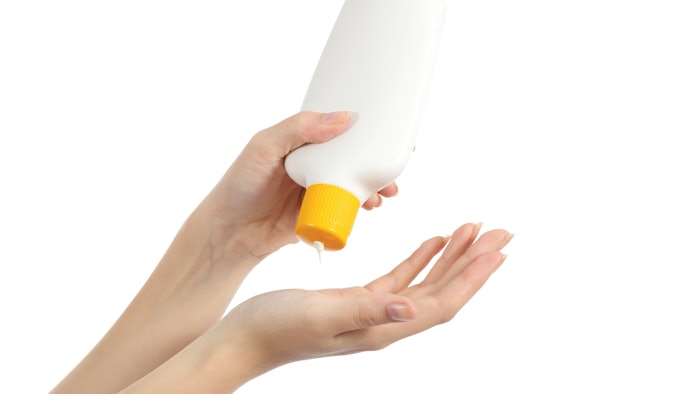
Spending time outdoors was perhaps never more desired than in the past year. While medical aesthetic and skin care specialists have always been proponents of quality sunscreens, 2020 and its ensuing prescription to eat, drink and socialize outside brought the need for patient education on sun protection to the forefront. The passage of the CARES Act and recent studies on systemic absorption of chemical sunscreen actives have added to the importance of staying abreast of sunscreen formulation trends, pending regulations and best practices in patient education.
New Rules in Sunscreens
When the Coronavirus Aid, Relief, and Economic Security Act (CARES) passed in March 2020, many were surprised that the legislation included sunscreen regulation. Regulations for over the counter (OTC) sunscreens have been in development since 1978. In 1999, the U.S. Food and Drug Administration (FDA) issued a final monograph, which included 16 approved sunscreen ingredients and a proposed SPF “cap” of 30+. The monograph was subsequently “stayed” and has never been put into effect.
In 2019, the FDA issued a proposed rule that would amend and lift the stay on the 1999 regulations, explains Kathy Dwyer, vice president of sales and marketing for Fallene, maker of the TIZO line of sunscreens. The proposed rule, which pertains to sunscreens that can be marketed without an FDA-approved new drug application (NDA) included the following changes/provisions:
- Of the 16 currently marketed active ingredients, two ingredients—zinc oxide and titanium dioxide—are GRASE (generally recognized as safe and effective) for use in sunscreens; two ingredients—PABA and trolamine salicylate—are not GRASE for use in sunscreens due to safety issues. Twelve ingredients—cinoxate, dioxybenzone, ensulizole, homosalate, meradimate, octinoxate, octisalate, octocrylene, padimate O, sulisobenzone, oxybenzone and avobenzone—were deemed to have insufficient safety data to make a positive GRASE determination
- A proposal that dosage forms that are GRASE for use as sunscreens include sprays, oils, lotions, creams, gels, butters, pastes, ointments and sticks. Powders are proposed to be eligible for inclusion in the monograph, but the FDA is requesting additional data. Wipes, towelettes, body washes, shampoos and other dosage forms are proposed to be categorized as new drugs because the FDA has not received data showing they are eligible for inclusion in the monograph
- Raising the maximum proposed SPF value on sunscreen labels from SPF 50+ to SPF 60+
- Requiring sunscreens with an SPF value of 15 or higher to also provide broad-spectrum protection and that, as SPF increases, the magnitude of protection against UVA radiation also increases
- New sunscreen product label requirements to assist consumers in more easily identifying key information, including the addition of the active ingredients on the front of the package to bring sunscreens in line with other OTC drugs; a notification on the front label for consumers to read the skin cancer/skin aging alert for sunscreens that have not been shown to help prevent skin cancer; and revised formats for SPF, broad spectrum and water resistance statements
- Clarification of the FDA’s expectations for testing and record keeping by entities that conduct sunscreen testing to ensure that the FDA can assess industry compliance with regulations
- Products that combine sunscreens with insect repellents are not GRASE
When the CARES Act was signed into law on March 27, 2020, it included the Over-The-Counter Monograph Safety, Innovation and Reform Act. That law set the existing categorization of actives noted above (GRASE, non-GRASE, not enough information to make a determination) and provided a more streamlined review process for OTC actives. As a result, all ingredients in Categories I (GRASE) and III (not enough information) remain on the OTC market as the FDA continues its review of the Category III actives. Products containing non-GRASE ingedients must file a new drug application (NDA) with the FDA for approval.
“The point of the monograph was to look at different ingredients to see if they were safe and effective and to create gold standards for sunscreen,” says Mona Gohara, MD, of Dermatology Physicians of Connecticut. “For our industry, the CARES Act really is about bringing things back to status quo. Included in the legislation is OTC drug reform, which impacts how sunscreens are regulated by the FDA. This includes how much SPF is necessary and how it should be marketed.”
With its new, streamlined review procedures, the Over-The-Counter Monograph Safety, Innovation and Reform Act requires the FDA to issue a proposed administrative order addressing OTC sunscreen ingredients and SPF requirements “no later than 18 months” after enactment of the CARES Act. Which means, we may see new GRASE and non-GRASE categorized actives as well as new SPF labeling requirements in the coming year.
Continue Reading to learn more about what is new in sun care in our Digital Magazine...
Mara Maddox is a freelance writer and public relations specialist with a background in branding and marketing for the upscale, consumer retail market. She has contributed to the International Society of Aesthetic and Plastic Surgeons (ISAPS) as well as a variety of plastic surgery centers and the integrative aesthetics industry.











